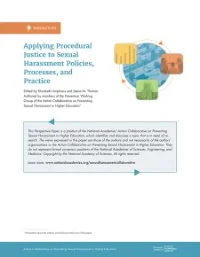By Kelley, L., Vignati, J., Wilkens-Earle, B., Grey, O., & Haberlen DeWolf, M.
Georgia’s juvenile justice system is at a crucial juncture, facing both significant challenges and promising opportunities for reform. This extensive analysis offers a comprehensive overview of the system’s structure, key partners, recent reforms, and ongoing issues. It aims to inform policymakers, advocates, and community leaders about the current state of juvenile justice in Georgia and guide efforts to improve outcomes for justice-involved youth. The landscape of juvenile justice in Georgia is intricate and unique. The state operates a functionally bifurcated system, with stateadministered “dependent” courts and locally operated “independent” courts, resulting in a patchwork of practices and policies across the state. This bifurcation poses challenges in standardizing approaches and collecting comprehensive data. According to its fiscal year (FY) 2023 annual report, the Department of Juvenile Justice (DJJ) supervised more than 9,000 youth daily, with secure facilities admitting more than 7,000 individuals and maintaining an average daily population of 1,051. However, these figures only partially tell the story. One of the most pressing issues confronting juvenile systems across the country is the overrepresentation of Black youth in the juvenile justice process. In Georgia, this overrepresentation is significant and increases as Black youth move through every stage of the juvenile justice process. This disparity indicates deeper systemic problems that require urgent attention and targeted interventions. The analysis also reveals troubling trends in behavioral health among justice-involved youth. In FY 2023, 65% of youth in long-term confinement and 48% in short-term detention were on the mental health caseload, underscoring the critical need for enhanced behavioral health services within the juvenile justice system and local communities. The intersection of education and juvenile justice presents another area for improvement. There are significant racial disparities in academic achievement, school discipline, and dropout rates. Zero-tolerance policies and the presence of law enforcement in schools may contribute to the “school-to-prison pipeline,” pushing students, particularly students of color, into the juvenile justice system for behaviors that would be better addressed within the home and community. Family and community factors play a crucial role in youth outcomes as well. Poverty, adverse childhood experiences (ACEs), and lack of community resources are identified as risk factors for juvenile justice involvement. The analysis found that 18% of children in Georgia have experienced two or more ACEs, with higher rates among Black and Hispanic children, highlighting the need for traumainformed approaches and community-based interventions across the state. The report also addresses issues surrounding focus populations within the juvenile justice system. Georgia remains one of just four states that process 17-year-olds in the adult criminal justice system, a practice widely criticized by juvenile justice advocates. Additionally, the treatment of youth charged with serious, violent felonies (Senate Bill 440 cases) and those sentenced to life without parole raises questions about age-appropriate responses to even the most severe offenses. Data collection and information sharing also pose a challenge. The lack of a comprehensive statewide data system impedes effective analysis and decision-making. Cross-agency information sharing is limited in Georgia, particularly for youth involved in multiple systems, making the provision of coordinated, holistic care difficult. Workforce challenges within the juvenile justice system present another hurdle, particularly in secure facilities. DJJ faces substantial retention and recruitment difficulties, especially for juvenile correctional officers. High turnover rates and staffing shortages impact quality of care and safety, potentially undermining rehabilitation efforts. However, with great challenge comes great opportunity. This report proposes a series of recommendations to address these multifaceted issues, including expanding community-based alternatives to detention and incarceration, enhancing behavioral health services, addressing racial and ethnic disparities, improving data systems, strengthening inter-agency collaboration, and investing in workforce development. Additionally, this report recommends raising the age of juvenile court jurisdiction and considering policy reform related to serious offenders, implementing a comprehensive plan for CHINS cases, and studying the impact of juvenile fines and fees.
Atlanta, GA : Voices for Georgia’s Children, 2025. 170p.





















